 The trend of taking mechanics from classic games and breathing new life into them is nothing new. Five Tribes did it with Mancala, Samurai Spirit did it with Blackjack, and SOS Titanic did it with solitaire. Is the gaming world ripe for even more of these? Enter the Dragon Castle and find out!
The trend of taking mechanics from classic games and breathing new life into them is nothing new. Five Tribes did it with Mancala, Samurai Spirit did it with Blackjack, and SOS Titanic did it with solitaire. Is the gaming world ripe for even more of these? Enter the Dragon Castle and find out!
Clearly inspired by the 1981 game Mahjong Solitaire, Dragon Castle will have you deconstructing a central castle and using the pieces to build your own. Match tiles, place tiles, and maybe build a shrine. Should this abstract strategy game have a place in your collection? Let’s find out.
Gameplay Overview:
Each game of Dragon Castle has players starting with one of over a dozen castle shapes to arrange the tiles. Once that is set up, a random dragon and spirit card are added to the play area for everyone to use.
On a player’s turn they start by choosing a tile from the topmost level of the castle. The tile must be “available”, meaning one of the long sides of the tile must be open. After taking that tile, the player can then either:
- Take a matching available tile from anywhere in the castle
- Take one shrine token
- Discard the tile for 1 victory point
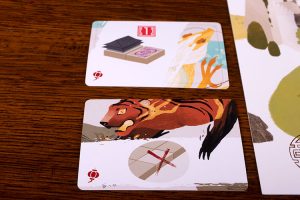
Any tiles taken must then be placed in your personal castle. Once a group of four or more tiles are orthogonally touching, they are consolidated. They are flipped over and the player scores points based on how large the group was. Finally, the player can place a shrine on top of one of the consolidated tiles, scoring points based on the height of the shrine. After tiles have been consolidated, tiles can be placed on top of them in future turns.
Additionally, on a player’s turn, they may invoke the spirit power by discarding a face-up tile from their castle or a shrine. These will let the player break the rules in various ways.
Turns go by in this manner until only the bottom level of the castle has tiles left. At that point, a player may “summon the dragon” by taking one of the available dragon tokens as their turn, earning them 2 victory points. Once all the dragon tokens are gone, the game ends. Players earn end game points based on the rules of the dragon card, and the player with the most VPs wins.
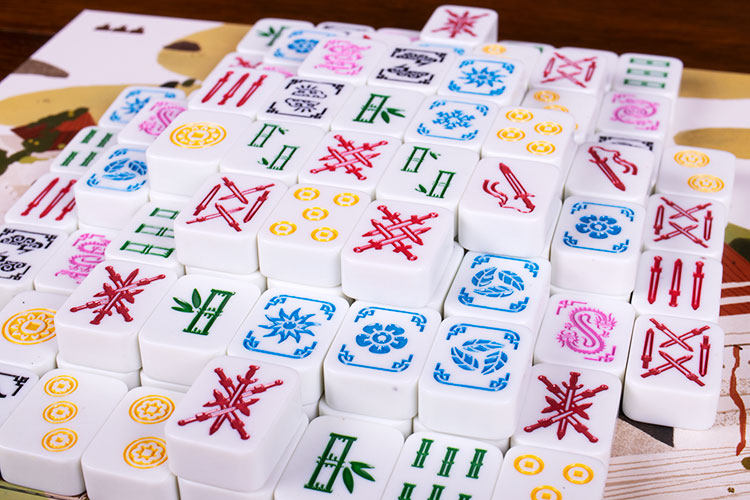
Game Experience:
Thanks to our game nights having been canceled the past few months, we’ve been playing a lot of games on Board Game Arena. While it’s no substitute for playing in person, it’s still a solidly fun experience. This is where I first tried Dragon Castle. It had been a game I pulled off the shelf at my FLGS a few times, but never picked up because I wasn’t sure how much I’d like the abstract nature of the game.
Well after a few players on BGA, I ended up ordering a copy from my local game store because I was thoroughly enjoying this title. Having played it in person now, I must say, the game does have an excellent table presence. The thick, chunky dragon tiles have a nice heft to them and they are a lot of fun to build with. The only downside is it can be a bit fiddly to flip over tiles in the middle of your castle. We never had any disasters, but there are definitely times you want to be careful when you are flipping.
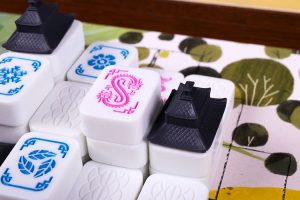
For the gameplay, I found the simple elegance of it to be quite enjoyable. Players will need to plan ahead and figure out the best actions to take on their turn. It’s usually ideal to grab two tiles when you can, but you also have to be aware of how many of those tiles of that color are going to be available in the near future. Yet even only taking 1 tile isn’t bad because that’s the only way to get more shrines, which definitely provide a non-trivial amount of victory points.
The main part of player interaction is going to come from hate drafting. If you see your opponent focusing on a certain color, you either want to take some of those tiles to stop them from collecting a large group, or make sure you aren’t going to leave them with a way to even take at tile. I’ve noticed that the game has a nice ebb and flow to it where as a level starts getting down to only a handful of tiles, choices can become lean, with more shrines taken. But as soon as a new floor opens up, the wealth of choices is like an unlocked floodgate.
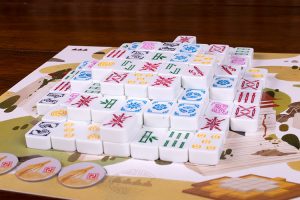
The only thing I wasn’t a huge fan of was how the game ended. Once there is only 1 level of tiles left, players can trigger the end game by taking the dragon tokens. This allows for a player who thinks they are in the lead to end the game before their opponent can’t catch up. So the end of the game can almost come on suddenly before other players would have wanted it to. I’d almost have preferred some kind of set timer at the end of the game where the lead player couldn’t just end the game with a pile of tiles still left.
Finally, I do want to say that Dragon Castle has a huge amount of replay value. With over a dozen setup options for the main castle and 20 spirit and dragon cards, that gives a lot of variability for the game. I am not a math guy, but that’s a lot of permutations of what the game could consist of. If you are looking for a game that offers up a somewhat different play experience each time, Dragon Castle has it.
Final Thoughts:
As someone who loves a game where you can sink your teeth into the theming, it’s a bit rare for me to love an abstract strategy game. Yet Dragon Castle not only took me by surprise, but has made its way to my gaming table quite often already. Also, publishers take note, being allowed to play the game online convinced me to buy a game I probably wouldn’t have normally… instead of the other way around.
If you are looking for an easy to learn, abstract strategy game with a great table presence and tons of replay value, you’ve got it with Dragon Castle.
Final Score: 4.5 stars – A great abstract strategy game with some excellent production values.
 Hits:
Hits:
• Lots of replay value
• Love those chunky tiles
• Easy to learn, quick turns
• Good table presence
Misses:
• End game can come on too suddenly
• Flipping tiles can be fiddly at times








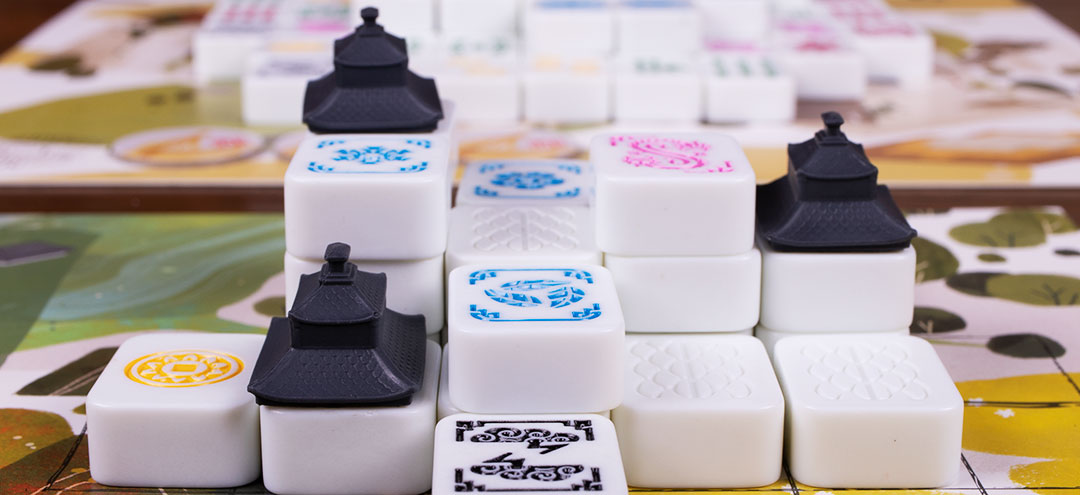

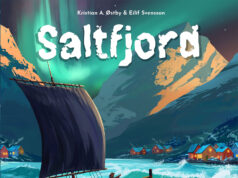













Very interesting game. I enjoy it. Thanks for your thoughts.
Whatever you don’t tell us how many players the game supports. This is useless and irrelevant info that we have no interest in knowing. Simply let us be surprised after we buy the game. Seriously, do your research and include this important info.
I think you’ve caught on to our Ron’s Rule of Player Counts. Every time we leave one out, we get together and say “I hope Ron gets really angry about this!”
Then you do, we high-five, and laugh. Thank you for continuing to provide us with mirth.